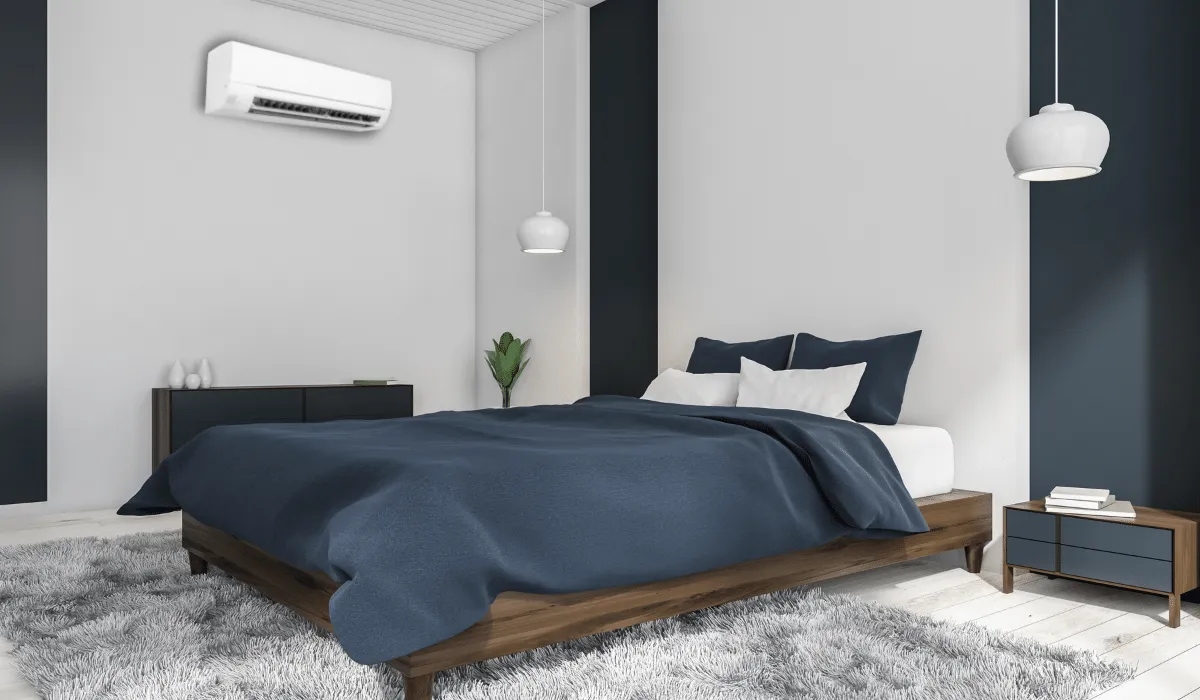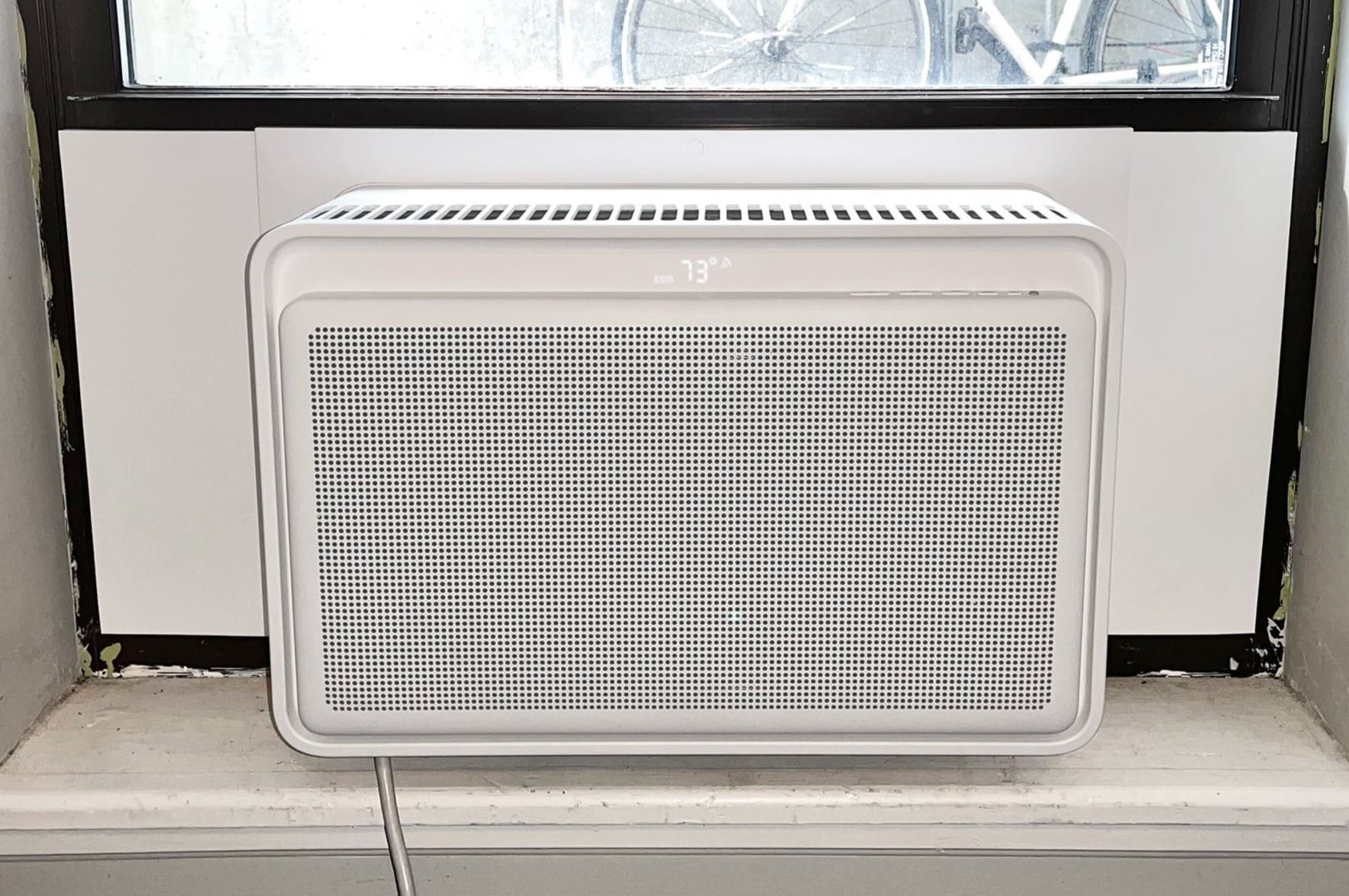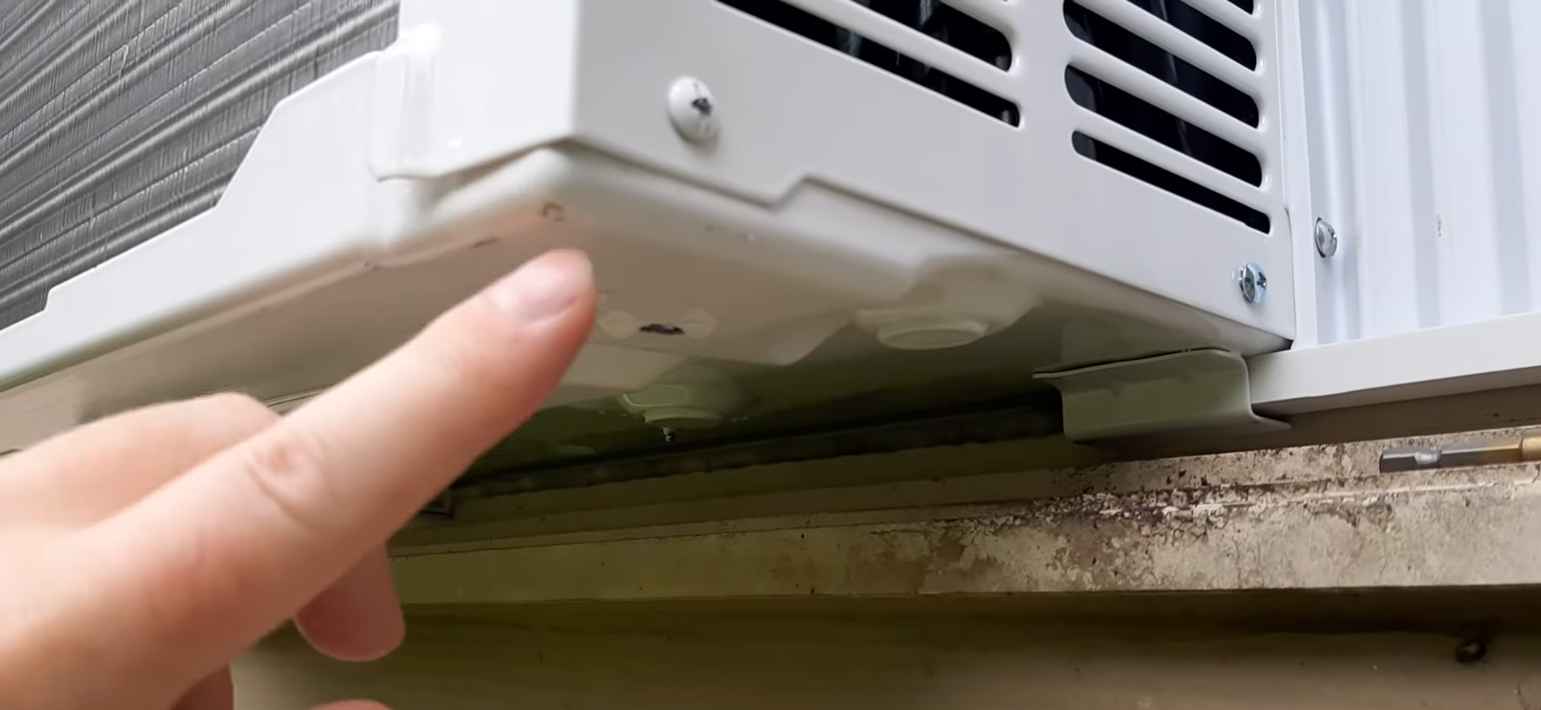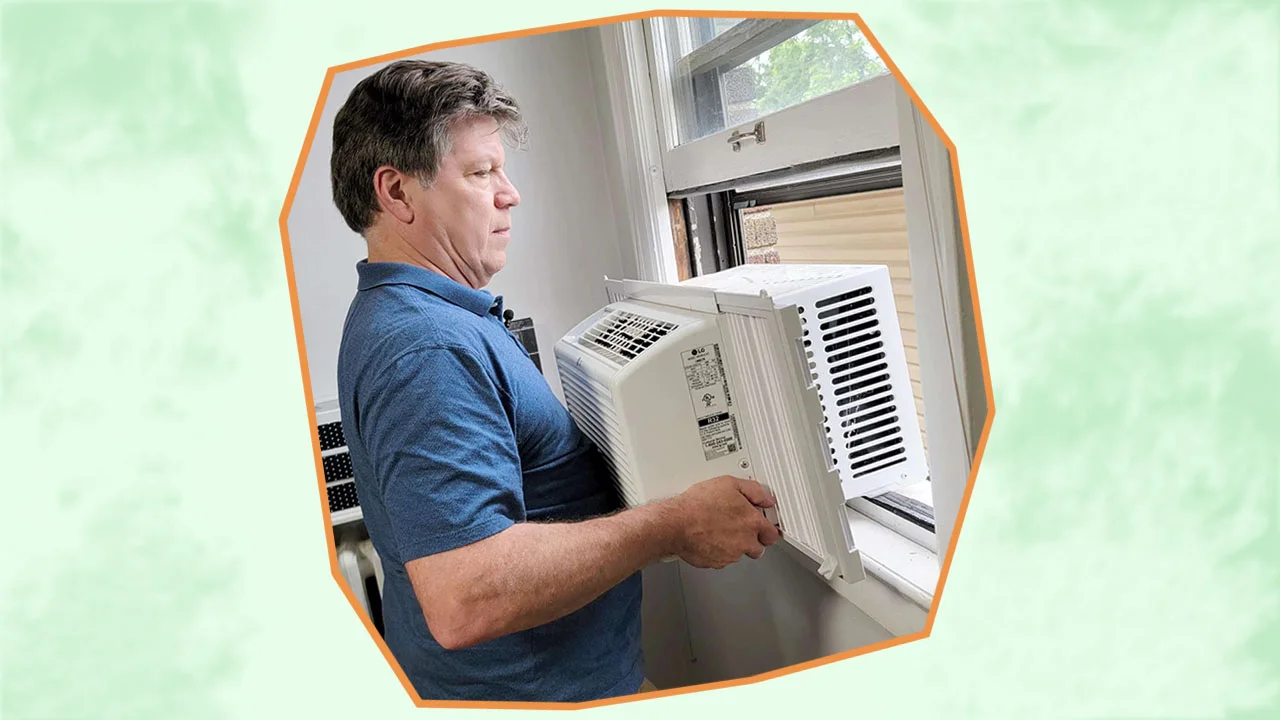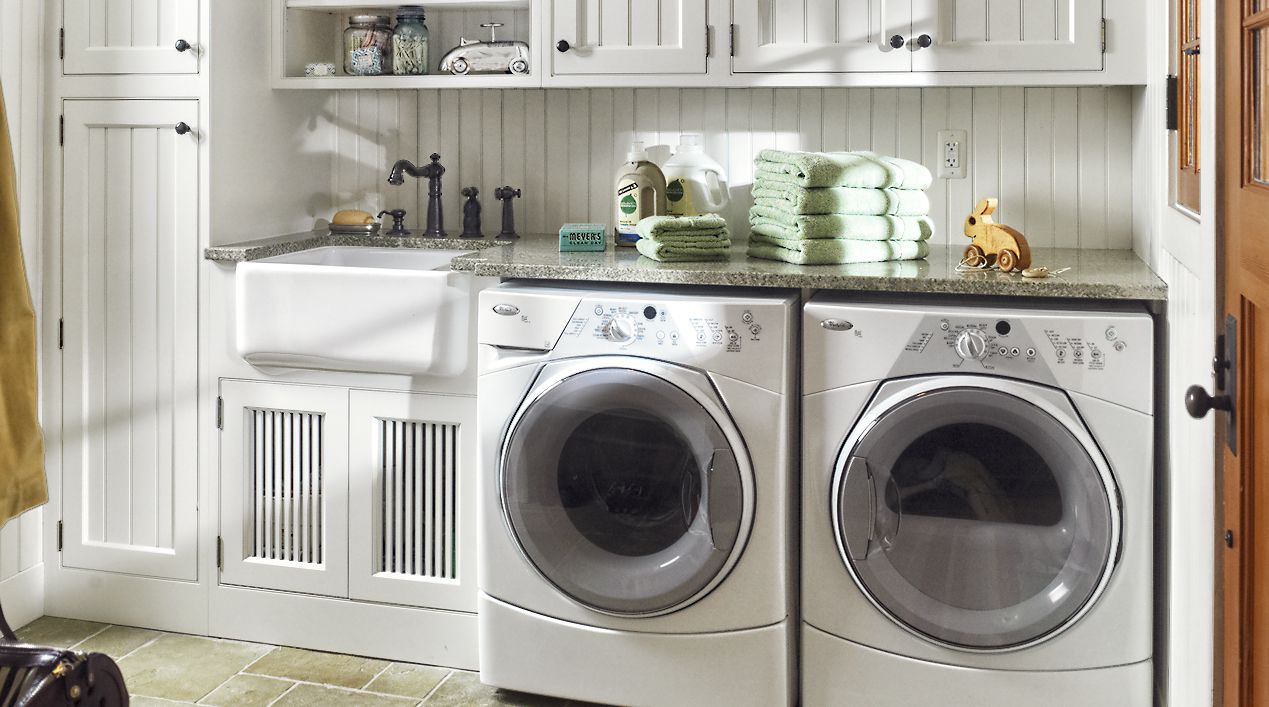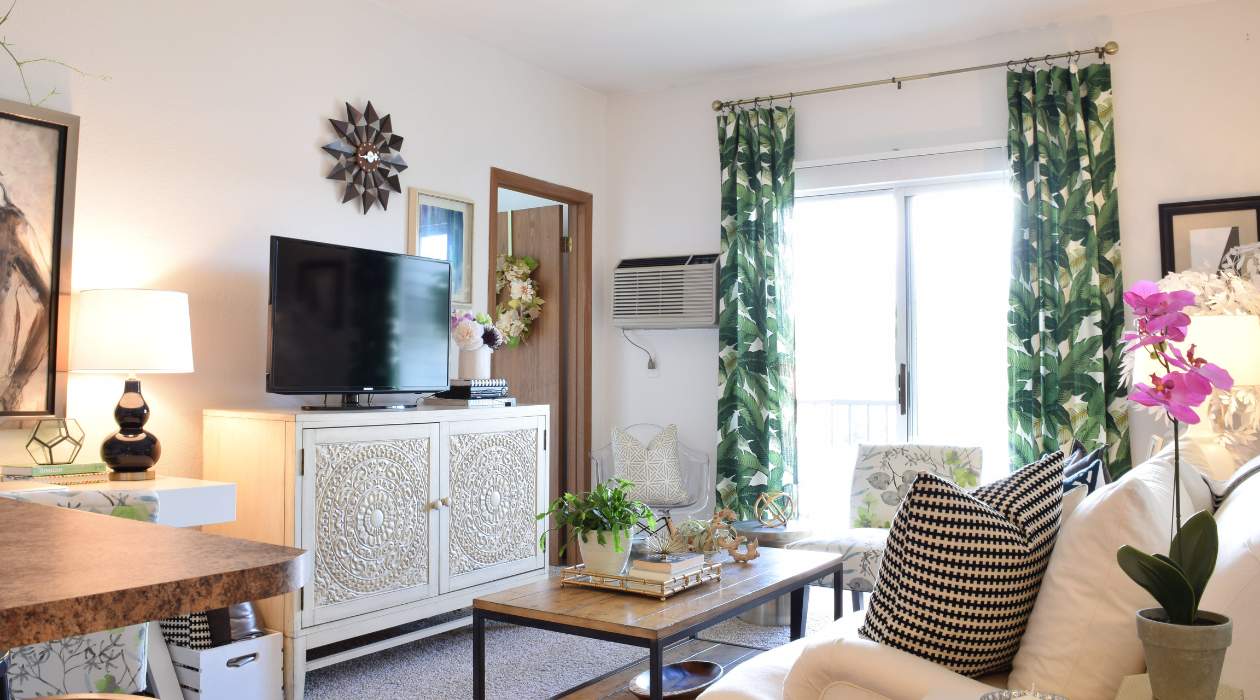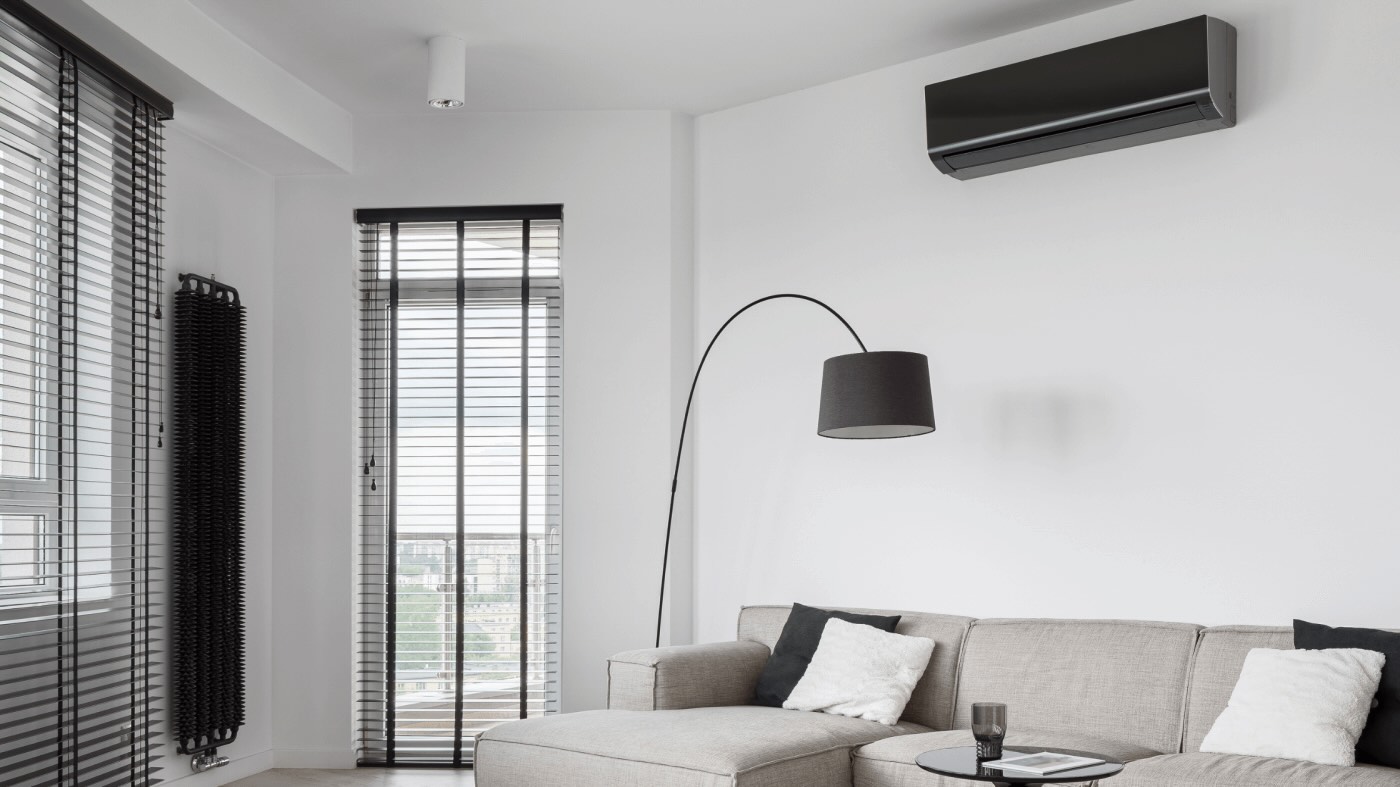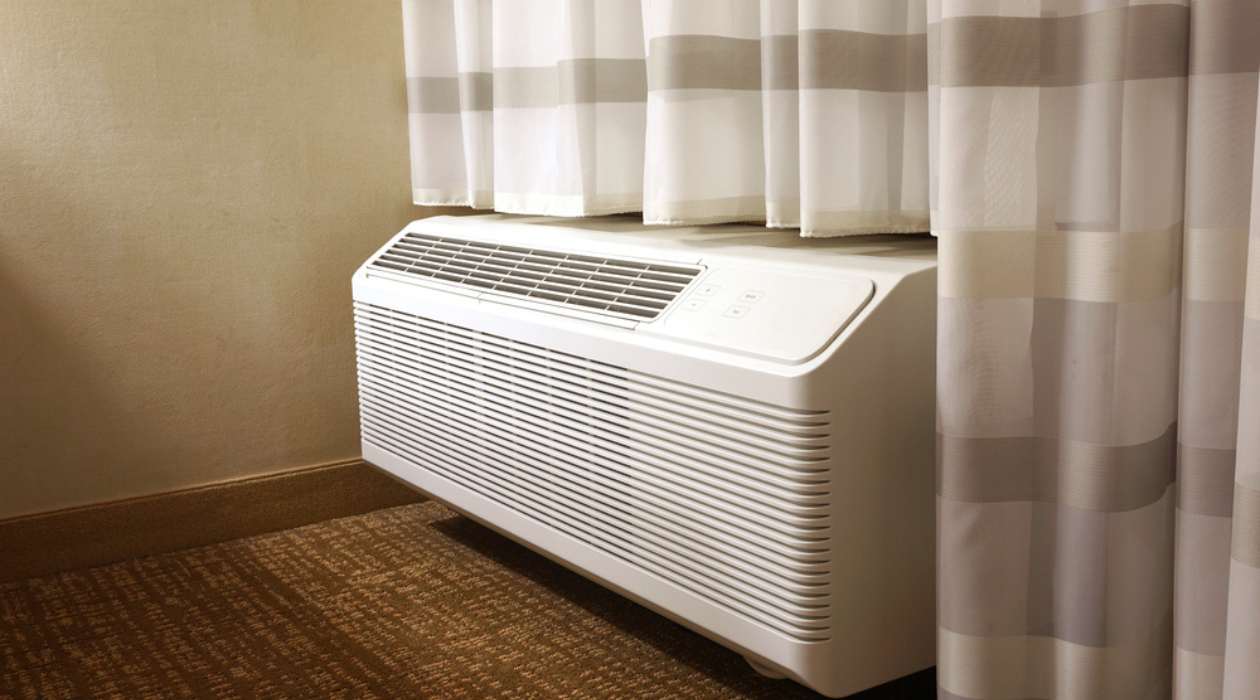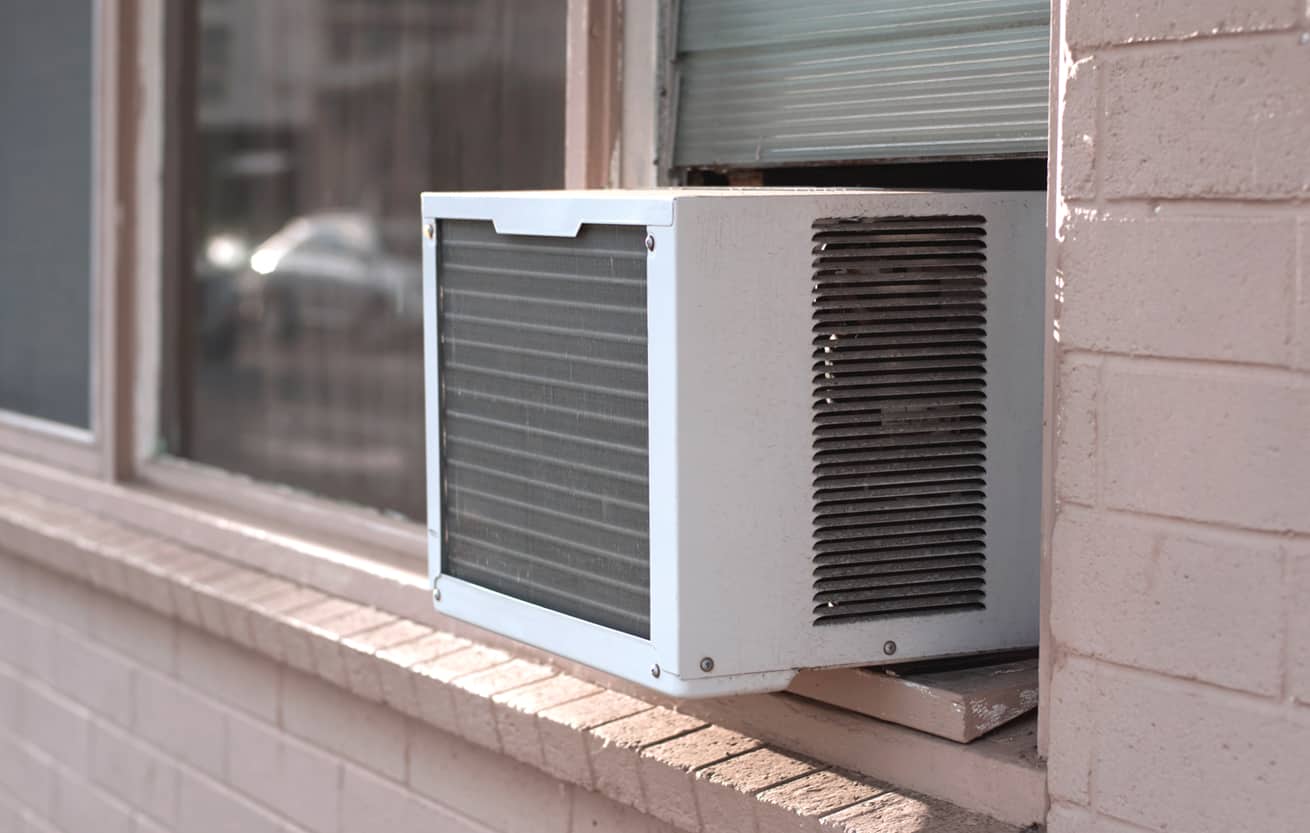Home>Home Maintenance>What Is The Smallest Size Window Air Conditioner
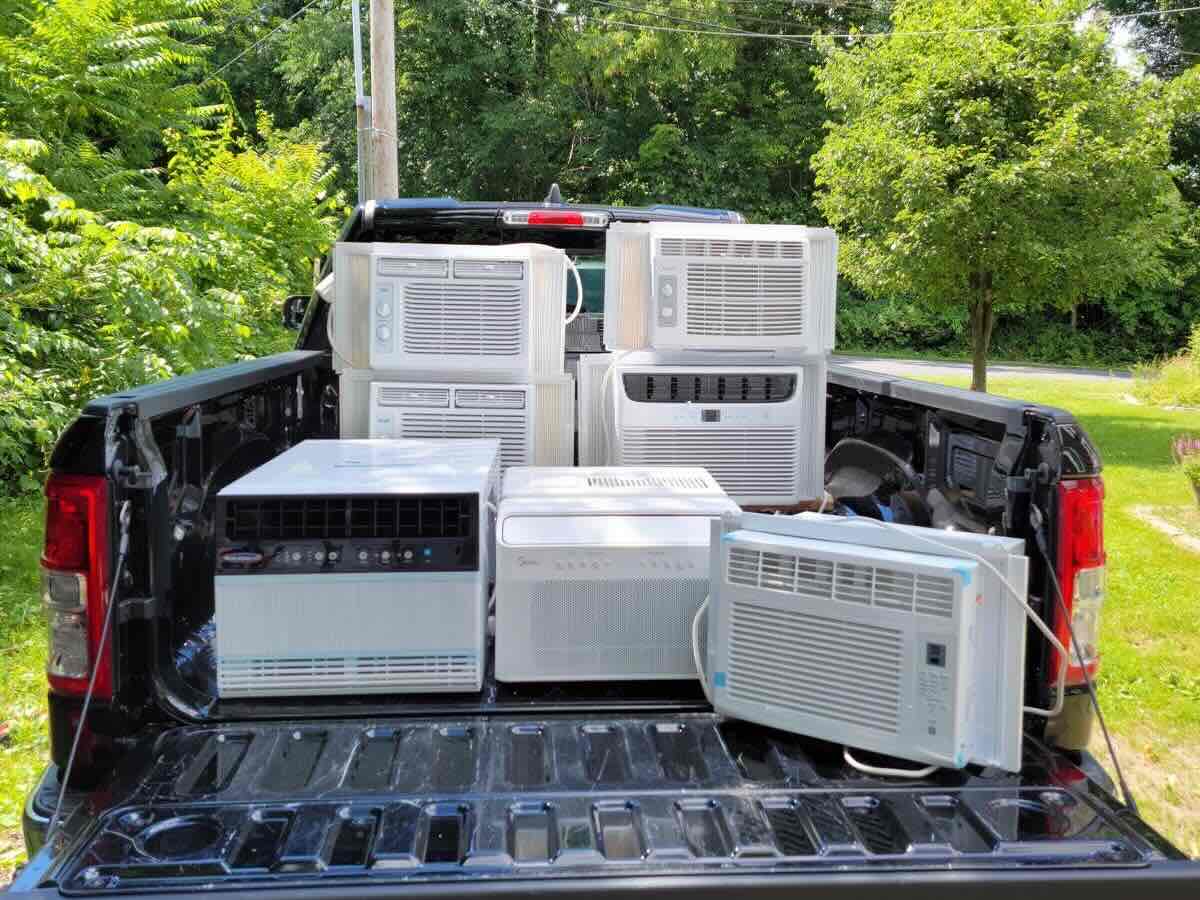

Home Maintenance
What Is The Smallest Size Window Air Conditioner
Modified: March 7, 2024
Looking for a compact and efficient window air conditioner for your home? Discover the smallest size window air conditioner and beat the summer heat with ease.
(Many of the links in this article redirect to a specific reviewed product. Your purchase of these products through affiliate links helps to generate commission for Storables.com, at no extra cost. Learn more)
Introduction
Welcome to the world of home maintenance! As a homeowner, we understand that you strive to make your living space as comfortable as possible. One essential aspect of creating a cozy environment is maintaining the ideal temperature indoors. And when it comes to beating the heat, a window air conditioner can be your best friend, especially if you have limited space.
In this article, we will dive deep into the world of small window air conditioners. We will explore the various factors you need to consider when choosing the smallest size window air conditioner for your home. Additionally, we will discuss the benefits and drawbacks of these compact cooling units, provide tips on installation and maintenance, and highlight some of the best models on the market.
Understanding what makes a small window air conditioner different from its larger counterparts is key. These units are specifically designed to fit into smaller windows, making them ideal for apartments, condos, or rooms with limited space. While they may be smaller in size, they are just as capable of delivering efficient cooling for your living space.
Before diving into the details, it’s important to note that different buyers may have unique needs. The smaller the unit, the fewer BTUs (British Thermal Units) it can produce. Therefore, it’s crucial to carefully consider your cooling requirements and the size of the room you intend to cool. By doing so, you can ensure that you invest in the right-sized window air conditioner that will efficiently cool your space without wasting energy.
Now, let’s delve into the factors you need to consider when shopping for a small window air conditioner.
Key Takeaways:
- When choosing a small window air conditioner, consider the size of your room, energy efficiency, and noise level. Proper installation and regular maintenance are crucial for efficient cooling and longevity.
- Look for energy-efficient models with high EER ratings and Energy Star certification. Take advantage of energy-saving features like programmable timers and smart connectivity to reduce energy consumption and save on utility bills.
Read more: 11 Smallest Window Air Conditioners Of 2022
Understanding Window Air Conditioners
Window air conditioners are self-contained units that are designed to be mounted directly in a window or a hole in an exterior wall. They work by extracting warm air from the room and expelling it outside, while simultaneously cooling and dehumidifying the indoor air. These units typically consist of two main components: the evaporator and the condenser.
The evaporator is responsible for cooling the air. It contains a refrigerant that absorbs heat from the indoor air, causing the air to cool down. The condenser, located on the outside of the unit, releases the heat that was absorbed from the indoor air. As a result, the cooled air is circulated back into the room, creating a comfortable environment.
Window air conditioners are available in various sizes, ranging from small, compact units to larger, more powerful ones. The cooling capacity of an air conditioner is measured in BTUs (British Thermal Units) per hour. Higher BTU ratings indicate a larger cooling capacity, meaning the unit can cool a larger space.
When choosing a window air conditioner, it’s crucial to ensure that the unit’s cooling capacity matches the size of the room you intend to cool. An undersized unit may struggle to cool the room effectively, while an oversized unit might consume excessive energy and result in humidity issues. Therefore, it’s important to calculate the cooling needs of your space before making a purchase.
Another important aspect to consider is the energy efficiency of the unit. Look for air conditioners with a high Energy Efficiency Ratio (EER) or a good Energy Star rating. These units are designed to consume less energy while providing optimal cooling performance. Investing in an energy-efficient window air conditioner not only helps reduce your environmental impact but also saves you money on your energy bills.
Now that you have a better understanding of window air conditioners, let’s explore the specific factors to consider when choosing a small window air conditioner.
Factors to Consider for Small Window Air Conditioners
When it comes to choosing the smallest size window air conditioner, there are several key factors to keep in mind. By considering these factors, you can ensure that you select a unit that meets your cooling needs and fits perfectly into your space.
- Cooling Capacity: The cooling capacity of an air conditioner is measured in BTUs (British Thermal Units) per hour. It represents the amount of heat the unit can remove from the room in an hour. When choosing a small window air conditioner, consider the size of the room you want to cool. A general rule of thumb is to account for approximately 20 BTUs per square foot of space for efficient cooling.
- Window Size: Small window air conditioners are specifically designed to fit into smaller windows. Before purchasing a unit, measure the dimensions of your window to ensure a proper fit. It’s also important to consider the window type, as some units may be more suitable for double-hung windows, while others are designed for casement or sliding windows.
- Energy Efficiency: Energy-efficient air conditioners not only help reduce your carbon footprint but also save you money on energy bills. Look for units with a high Energy Efficiency Ratio (EER) or an Energy Star certification. These units are designed to provide optimal cooling performance while consuming less energy.
- Noise Level: The noise level of an air conditioner is an important consideration, especially if you plan to use the unit in a bedroom or a quiet space. Look for units that have a lower decibel rating to ensure a peaceful indoor environment.
- Features and Functions: Consider the additional features and functions that come with the small window air conditioner. Some units offer programmable timers, remote controls, adjustable fan speeds, and sleep modes, which can enhance your cooling experience and convenience.
- Price and Warranty: Finally, consider the price of the unit and the warranty provided by the manufacturer. While it’s important to stay within your budget, be mindful of the quality and longevity of the product. A longer warranty period can provide you with peace of mind and protect your investment.
By considering these factors, you can narrow down your options and find the perfect small window air conditioner that suits your needs and preferences. In the next section, we will delve into the benefits and drawbacks of these compact cooling units.
Benefits and Drawbacks of Small Window Air Conditioners
Small window air conditioners offer several benefits that make them a popular choice for homeowners with limited space. However, like any cooling system, they also have some drawbacks. Let’s explore both the advantages and disadvantages of these compact cooling units.
Benefits:
- Space-Saving: Small window air conditioners are designed to fit into smaller windows, making them an excellent choice for apartments, condos, or rooms with limited space. Their compact size allows for easy installation and doesn’t obstruct the view from your window.
- Affordability: Compared to larger air conditioning systems, small window air conditioners are generally more affordable. They offer a cost-effective cooling solution for those on a budget.
- Easy Installation: Installing a small window air conditioner is relatively straightforward and can often be done as a DIY project. Most units come with installation kits and step-by-step instructions to guide you through the process.
- Targeted Cooling: With a small window air conditioner, you have control over which rooms or areas you want to cool. You can place the unit in specific windows, allowing you to cool only the rooms that are occupied, thereby saving energy and reducing costs.
- Portability: Small window air conditioners are typically lightweight and portable. If you need to move the unit to a different room or even to a new home, it’s relatively easy to do so.
Read more: What Is The Smallest Vanity Size
Drawbacks:
- Cooling Capacity: The smaller size of these units means they have limited cooling capacity. If you have a larger room or a space with high heat load, a small window air conditioner may struggle to effectively cool the area.
- Noise: Small window air conditioners tend to be noisier compared to larger central air conditioning units. While modern models have made significant improvements in noise reduction, some individuals may find the noise disruptive, especially during sleep or quiet activities.
- Limited Features: Due to their compact size, small window air conditioners may have fewer features compared to larger systems. You may not find advanced functions like smart connectivity or multiple cooling modes in these units.
- Limited Design Options: Finding a small window air conditioner that matches your aesthetic preferences may be challenging. These units are available in a limited range of designs and styles, which may limit your choices in terms of appearance.
Consider these benefits and drawbacks when deciding on a small window air conditioner. Next, we will guide you on how to determine the smallest size window air conditioner that will best suit your needs.
Determining the Smallest Size Window Air Conditioner for Your Needs
Choosing the smallest size window air conditioner that is suitable for your needs requires careful consideration of several factors. By taking these factors into account, you can ensure that you select a unit that provides efficient and adequate cooling for your space.
Room Size:
The first step in determining the appropriate size of your window air conditioner is to assess the size of the room you want to cool. Measure the length, width, and height of the room and multiply these dimensions to calculate the square footage. This will give you an idea of the cooling capacity required to effectively cool the space. As a general rule of thumb, consider approximately 20 BTUs per square foot for efficient cooling.
Heat Load:
In addition to room size, it’s important to consider the heat load of the space. Factors such as the number of windows, insulation, sunlight exposure, and the number of occupants can contribute to the heat load. If the room receives a significant amount of sunlight or has poor insulation, you may need a higher cooling capacity to compensate for the extra heat.
Read more: What Is A Window Air Conditioner
Location:
The geographical location of your home can also impact your cooling needs. If you live in a region with a hot and humid climate, you may require a higher BTU rating to combat the heat effectively. On the other hand, if you live in a milder climate, a smaller unit may be sufficient.
Energy Efficiency:
Consider the energy efficiency of the window air conditioner. Look for units with a high Energy Efficiency Ratio (EER) or an Energy Star certification. These units are designed to provide optimal cooling performance while consuming less energy. An energy-efficient unit not only saves you money on your energy bills but also reduces your environmental impact.
Installation Space:
Take into account the size and dimensions of the window where you plan to install the air conditioner. Measure the width, height, and depth of the window to ensure that the unit will fit properly. Remember to leave enough clearance for installation and maintenance purposes.
Budget:
Finally, consider your budget and find a balance between the cooling capacity and the price of the unit. While it’s important to stay within your budget, make sure to choose a quality air conditioner from a reputable brand that offers good performance and reliability.
By considering these factors, you can determine the smallest size window air conditioner that will effectively cool your space while meeting your specific needs. In the next section, we will highlight some of the top small window air conditioner models currently available on the market.
Read more: What Size Wire For An Air Conditioner
Top Small Window Air Conditioner Models on the Market
When it comes to choosing a small window air conditioner, there are several models on the market that offer efficient cooling and reliable performance. Let’s take a look at some of the top options available:
- Frigidaire FFRA0511R1E – 5,000 BTU: This compact air conditioner from Frigidaire is perfect for small rooms of up to 150 square feet. It offers convenient features such as a programmable timer, adjustable fan speeds, and a remote control. The unit is energy-efficient and operates quietly, ensuring a comfortable environment.
- LG LW6017R – 6,000 BTU: With cooling capacity suitable for rooms up to 260 square feet, the LG LW6017R is an efficient and reliable option. It features a digital display, a 24-hour programmable timer, three cooling modes, and three fan speeds. The unit also boasts energy-saving features for optimal efficiency.
- Haier ESAQ406T – 6,000 BTU: This sleek and stylish window air conditioner from Haier is known for its ultra-quiet operation. With a cooling capacity suitable for rooms up to 250 square feet, it offers an easy-to-use electronic control panel, four-way air direction, and energy-saving features. It also comes with a remote control for added convenience.
- GE AHY08LZ – 8,000 BTU: If you need a bit more cooling power, the GE AHY08LZ is an excellent choice. With a cooling capacity suitable for rooms up to 350 square feet, it offers energy-efficient operation, three cooling modes, and three fan speeds. The unit also features a digital display, a remote control, and a programmable timer.
- Emerson Quiet Kool EARC5RD1 – 5,000 BTU: As the name suggests, this Emerson Quiet Kool unit ensures quiet operation while providing efficient cooling. With a cooling capacity suitable for rooms up to 150 square feet, it features a digital display, three cooling modes, and three fan speeds. The unit also offers energy-saving and sleep mode functions.
These are just a few examples of the top small window air conditioner models available on the market. When choosing a unit, consider your specific cooling needs, the size of your space, and your budget. Reading customer reviews and comparing features and prices can also help you make an informed decision.
Next, we will provide some installation and maintenance tips to ensure proper functioning and longevity of your small window air conditioner.
Installation and Maintenance Tips for Small Window Air Conditioners
Proper installation and regular maintenance of your small window air conditioner are crucial to ensure optimal cooling performance and durability. Here are some tips to help you with the installation and maintenance process:
Installation:
- Choose the Right Window: Select a window that can accommodate the size and weight of the air conditioner unit. Ensure that the window is properly sealed and secure.
- Read the Manual: Carefully read the manufacturer’s installation instructions before starting the installation process. Follow the step-by-step instructions to properly install the unit.
- Use Support Brackets: Many small window air conditioners come with support brackets or extensions to ensure the unit is properly secured. Follow the instructions provided and use these brackets to add stability and balance to the installation.
- Proper Insulation: Use foam or rubber insulation strips to seal any gaps between the air conditioner unit and the window. This helps to prevent air leakage and maintain efficient cooling.
- Maintain Clear Airflow: Make sure that the outdoor side of the unit is unobstructed to allow for proper airflow. Remove any debris, leaves, or other objects that may block the vents or impede the airflow.
Maintenance:
- Regular Cleaning: Clean the air filters regularly to maintain efficient airflow and cooling performance. Follow the manufacturer’s instructions for proper cleaning methods and frequency.
- Check for Leaks: Inspect the unit for any signs of water leakage or condensation buildup. If you notice any leaks, address them promptly to prevent damage to the unit and surrounding areas.
- Clean the Condenser Coil: The condenser coil on the outdoor side of the unit can accumulate dirt and debris over time. Clean this coil using a soft brush or vacuum cleaner to ensure optimal heat exchange efficiency.
- Check Electrical Connections: Periodically inspect the unit’s electrical connections for any signs of damage or loose connections. Ensure that the power supply is securely connected and that the unit is receiving the correct voltage.
- Professional Inspection: Consider scheduling regular professional inspections to ensure the air conditioner is functioning properly. A qualified technician can identify and address any potential issues before they become major problems.
By following these installation and maintenance tips, you can maximize the performance and longevity of your small window air conditioner. Proper installation and regular maintenance will not only ensure efficient cooling but also help you save on energy costs and prevent costly repairs.
Now that you are equipped with installation and maintenance knowledge, let’s delve into the energy efficiency of small window air conditioners in the next section.
Read more: What Is The Quietest Window Air Conditioner
Energy Efficiency of Small Window Air Conditioners
Energy efficiency is an important factor to consider when choosing a small window air conditioner. Opting for an energy-efficient unit not only helps reduce your environmental impact but also saves you money on your energy bills. Let’s explore the energy efficiency features and considerations of these cooling units.
Energy Efficiency Ratio (EER):
The Energy Efficiency Ratio (EER) is a measurement of an air conditioner’s cooling capacity per unit of energy consumed. It represents how efficiently the unit can convert electrical input into cooling output. Higher EER ratings indicate a more energy-efficient air conditioner. When shopping for a small window air conditioner, look for models with higher EER ratings to ensure optimal energy efficiency.
Energy Star Certification:
Another way to identify energy-efficient window air conditioners is through the Energy Star certification. The Energy Star label indicates that the unit meets or exceeds specific energy efficiency criteria set by the U.S. Environmental Protection Agency. Energy Star-certified air conditioners are designed to consume less energy while still providing efficient cooling performance.
Additional Energy-Saving Features:
In addition to high EER ratings and Energy Star certification, many small window air conditioners offer a range of energy-saving features to further reduce energy consumption. Some common energy-saving features include:
- Programmable Timer: This feature allows you to schedule the unit to turn on or off at specific times. You can avoid running the air conditioner when it’s not needed, saving energy and reducing costs.
- Sleep Mode: Sleep mode adjusts the temperature and fan speed settings to create a more comfortable sleeping environment while conserving energy. The unit can gradually adjust settings throughout the night to ensure a good night’s sleep without wasting energy.
- Low Power Mode: Some air conditioners offer a low power mode or energy-saving mode, which reduces the cooling capacity and power consumption while still maintaining a comfortable indoor temperature.
- Smart Connectivity: Certain models come with smart connectivity options that allow you to control and monitor the unit remotely through a smartphone app. This feature enables you to manage the air conditioner’s settings efficiently and avoid unnecessary energy consumption.
When considering the energy efficiency of a small window air conditioner, it’s important to note that proper installation and regular maintenance also play significant roles. A well-installed and well-maintained unit operates optimally and is less likely to experience energy inefficiency.
By selecting an energy-efficient small window air conditioner and utilizing its energy-saving features, you can create a comfortable indoor environment while minimizing your energy usage and environmental impact. Now, let’s conclude our exploration of small window air conditioners.
Conclusion
In conclusion, small window air conditioners offer a convenient and efficient cooling solution for homeowners with limited space. By understanding the key factors to consider, you can confidently choose the smallest size window air conditioner that meets your cooling needs.
When choosing a small window air conditioner, consider factors such as cooling capacity, energy efficiency, noise level, and additional features. By assessing the size of the room, the heat load, and your geographical location, you can determine the appropriate BTU rating for your unit.
Installing a small window air conditioner requires careful measurement and following the manufacturer’s instructions. Ensure proper sealing, use support brackets for stability, and maintain clear airflow for optimal performance. Regular maintenance, including cleaning the filters, checking for leaks, and inspecting electrical connections, is essential for long-lasting and efficient operation.
When it comes to energy efficiency, look for air conditioners with high EER ratings and Energy Star certification. Take advantage of energy-saving features like programmable timers, sleep modes, and smart connectivity to reduce energy consumption and save on your utility bills.
Finally, consider your budget, warranty, and customer reviews when selecting a small window air conditioner. Popular models like the Frigidaire FFRA0511R1E, LG LW6017R, and Haier ESAQ406T offer efficient cooling in compact sizes.
By following the tips and guidelines outlined in this article, you can enjoy a comfortable indoor environment year-round with a small window air conditioner that perfectly suits your needs. Stay cool and beat the heat while saving energy and reducing your environmental footprint!
Frequently Asked Questions about What Is The Smallest Size Window Air Conditioner
Was this page helpful?
At Storables.com, we guarantee accurate and reliable information. Our content, validated by Expert Board Contributors, is crafted following stringent Editorial Policies. We're committed to providing you with well-researched, expert-backed insights for all your informational needs.
